Great Seoul City Wall
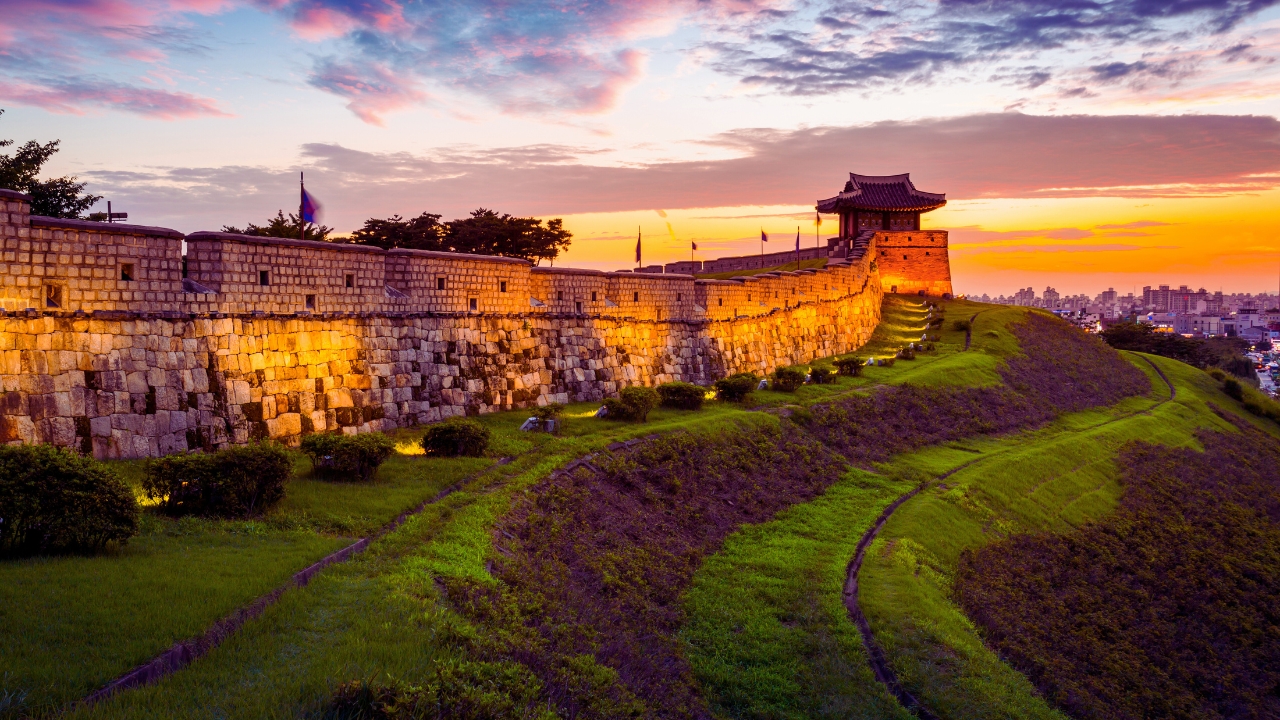 The Great Seoul City Wall during sunset
The Great Seoul City Wall during sunsetThe Great Seoul City Wall
Seoul, the capital city of South Korea, is a popular destination for travelers worldwide. It's known for its vibrant culture, delicious cuisine, and rich history.
One of the city's most fascinating historical sites is the great Seoul City Wall, a remarkable defensive structure that has stood the test of time.
The wall, also known as Hanyangdoseong, encircles the heart of Seoul and provides a glimpse into the city's past.
Now, we'll examine the history of the great Seoul City Wall, its significance, and why it's a must-visit attraction for anyone traveling to Seoul.
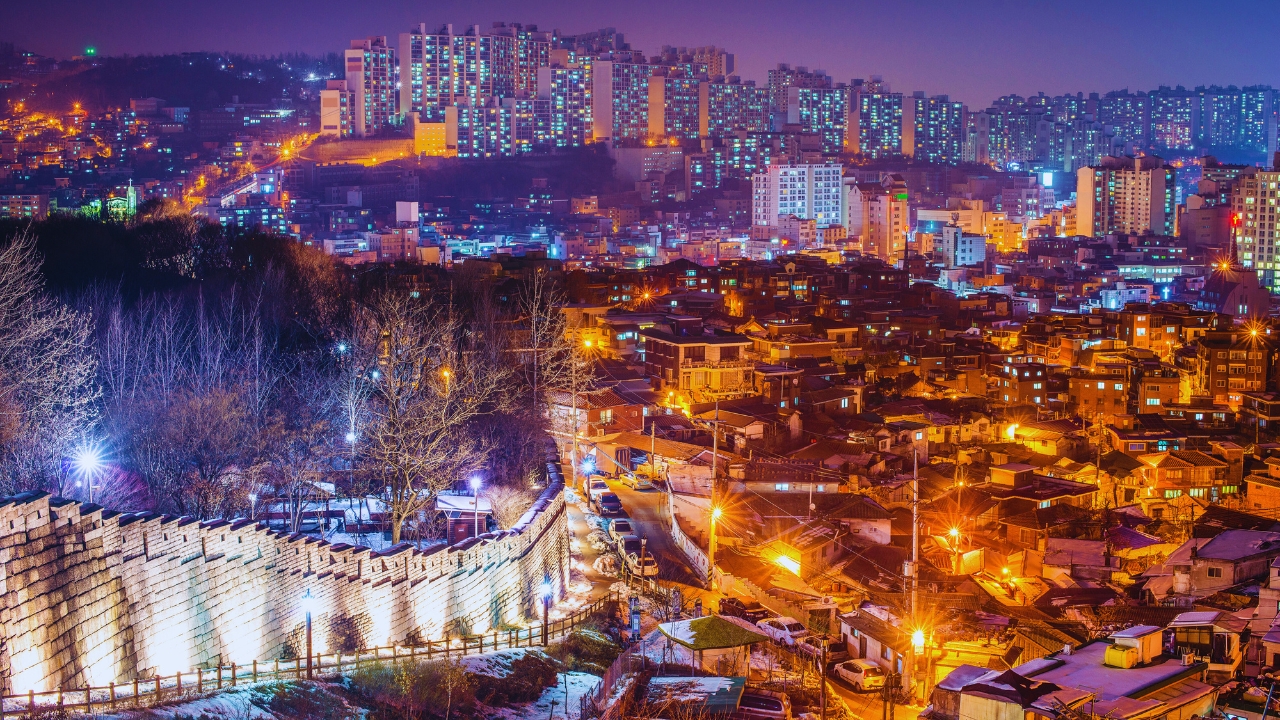 The Great Seoul City Wall in the evening
The Great Seoul City Wall in the evening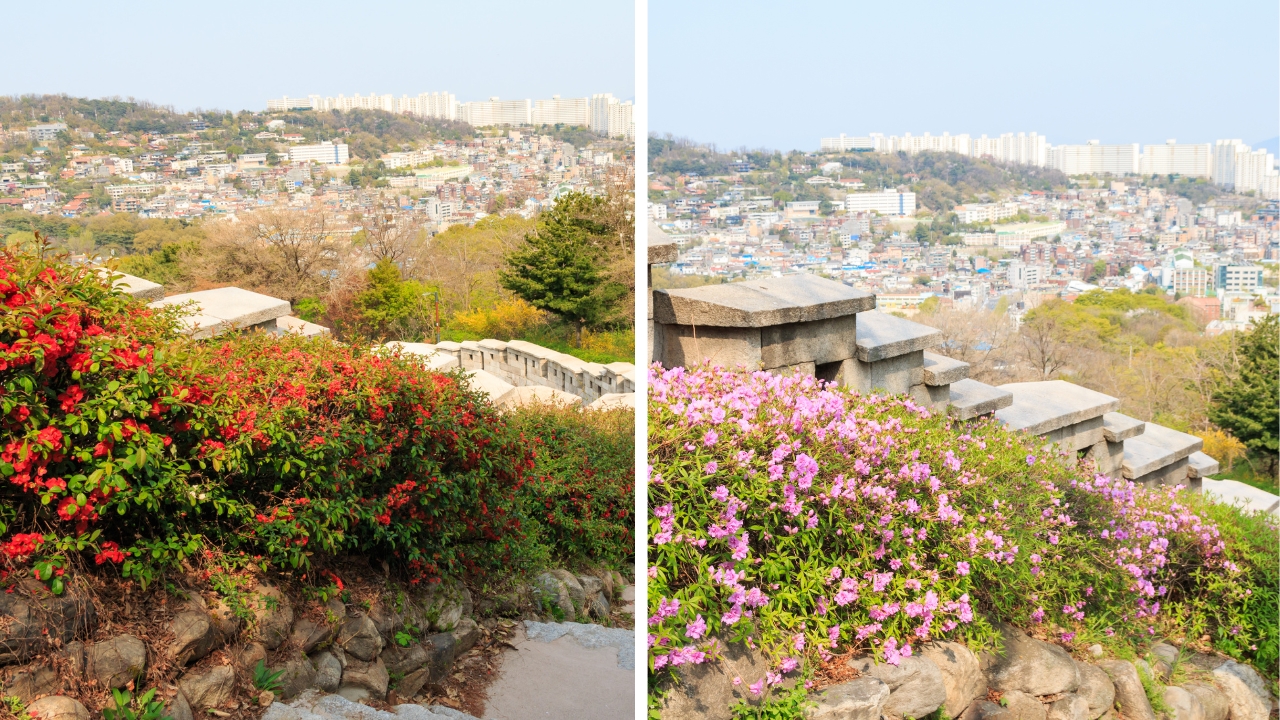
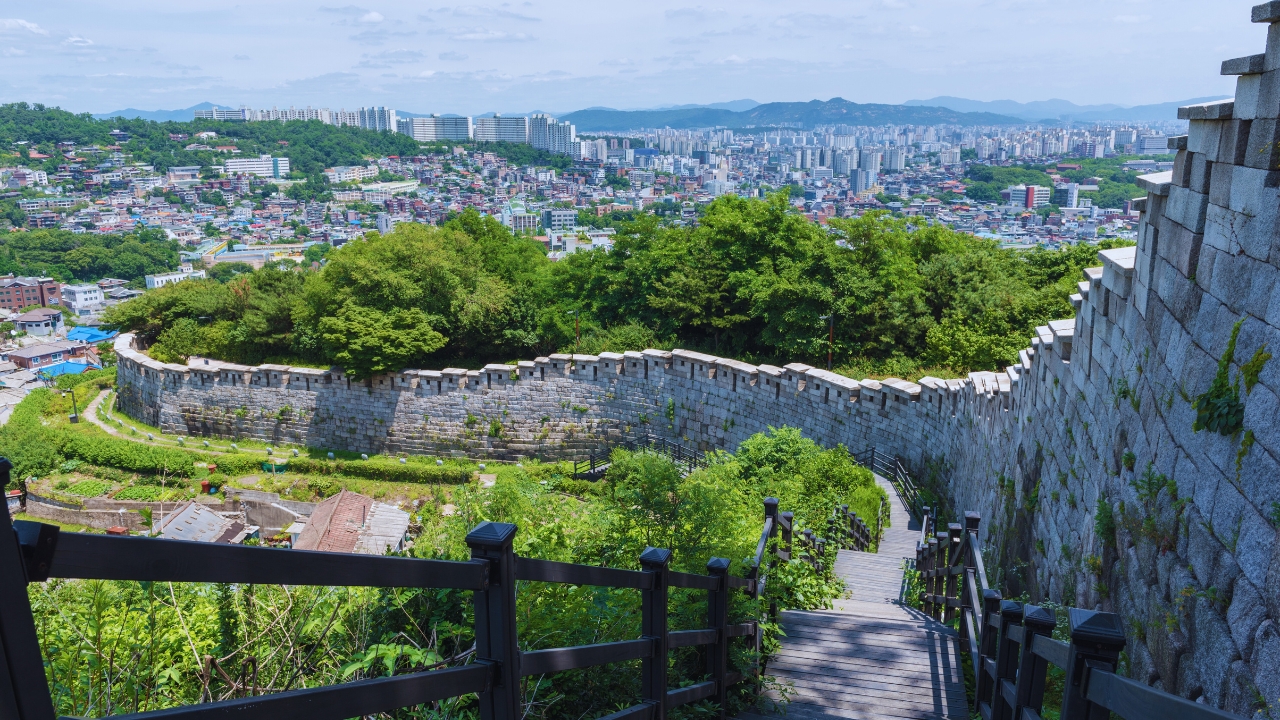
Seoul City Wall: Construction & Early Era
- 1395: King Taejo of the Joseon dynasty initiated the construction
- 1396: Most of the wall, including the Eight Gates, was completed.
The great Seoul City Wall is a historical landmark dating back to the Joseon dynasty in Korea.
It was built in 1395 under the orders of King Taejo, who wanted to establish a clear boundary between the city center and its surrounding areas.
The wall was completed in 1396, and eight gates served as entryways to the city.
Initially, the wall was used to differentiate the city's downtown (Seong-jung) from its urban periphery (Seongjeosimni).
However, it later played a significant role in defending the city against foreign invasions, including the Japanese invasion in the late 16th century.
The stone wall stretches over 18.6 kilometers around the city and is divided into four sections: the northern, eastern, southern, and western walls.
Each section incorporates unique features, including the Bukaksan and Namsan mountains, into its design.
Today, the Seoul City Wall is a popular tourist attraction and a symbol of Korea's rich cultural heritage.
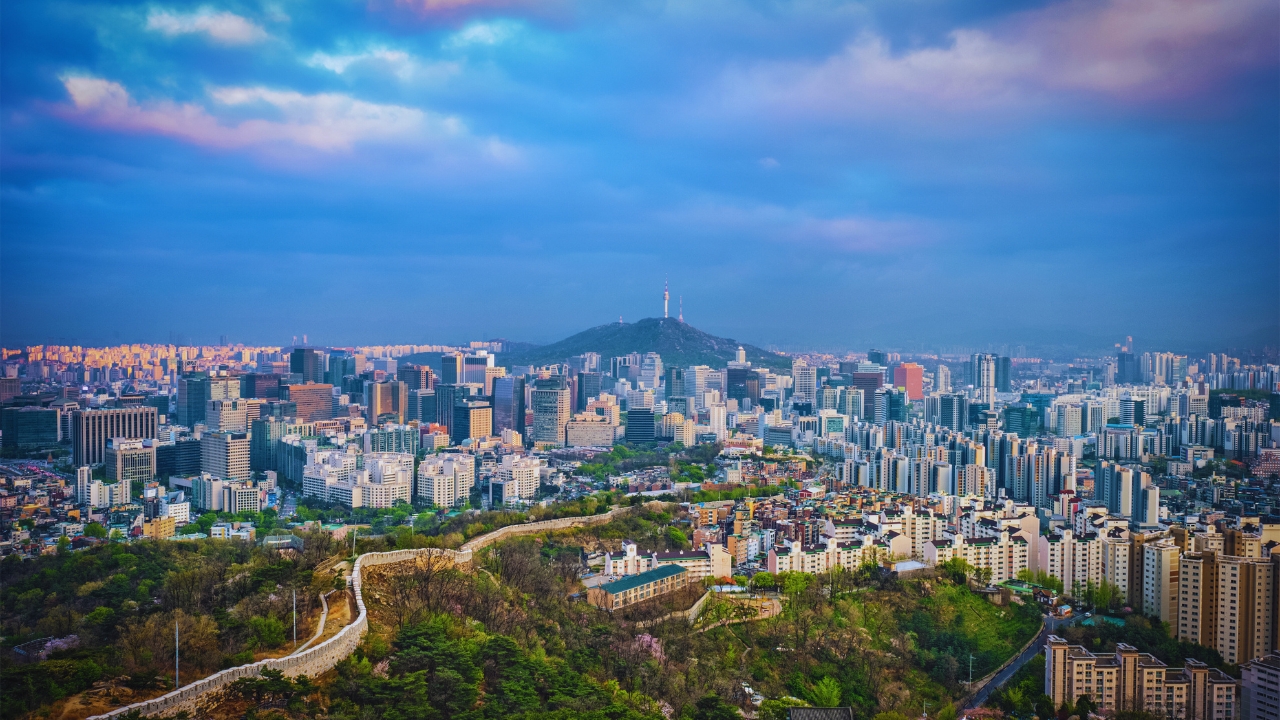 One can see various features of Seoul from any vantage point of the wall.
One can see various features of Seoul from any vantage point of the wall.Middle Era Challenges
- Invasions: Joseon faced invasions from Japan (Toyotomi government) and China (Qing Empire).
- Late Joseon Period: The wall was redeveloped to strengthen its military functions.
During the Middle Era of Joseon, the kingdom faced numerous challenges on multiple fronts.
It faced invasions from Japan's Toyotomi government, which sought to expand its influence in Korea, and China's Qing Empire, which sought to establish its dominance in the region.
These invasions not only posed a military threat to the kingdom but also posed a significant economic challenge.
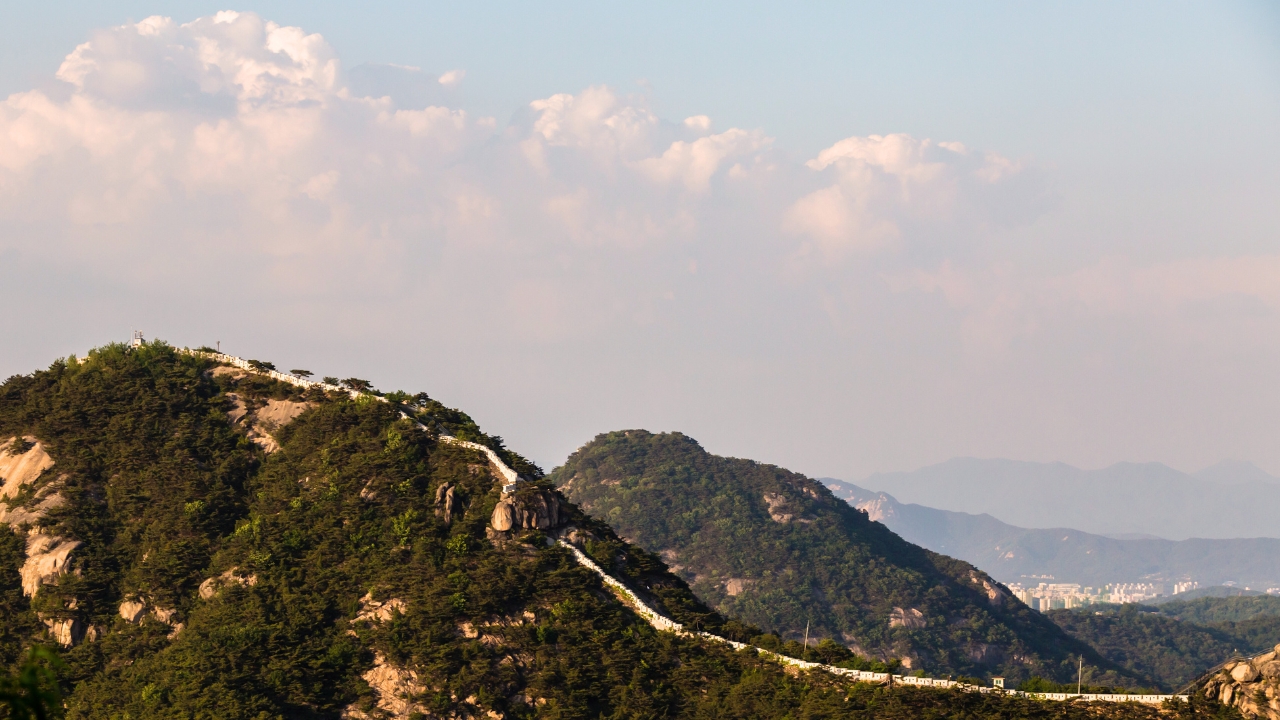 The Great Seoul City Wall lines the strategic mountains in Seoul
The Great Seoul City Wall lines the strategic mountains in SeoulThe Joseon government took several measures to strengthen its military capabilities in response to these invasions.
One of the most significant measures was the redevelopment of the wall that surrounded the kingdom. The wall was reinforced and made taller to make it more challenging for invaders to breach.
Additionally, the government built numerous forts and watchtowers along the wall to provide additional protection.
However, the challenges faced by the Joseon kingdom did not end with the invasions. The Late Joseon Period saw the kingdom face new challenges, including internal conflicts and political instability.
As a result, the wall was redeveloped once again, this time to control internal conflicts and strengthen the kingdom's political power.
The redevelopment of the wall during the Middle and Late Joseon Periods was a significant development that helped the kingdom face numerous challenges and protect its people.
Colonial Era and Modernization
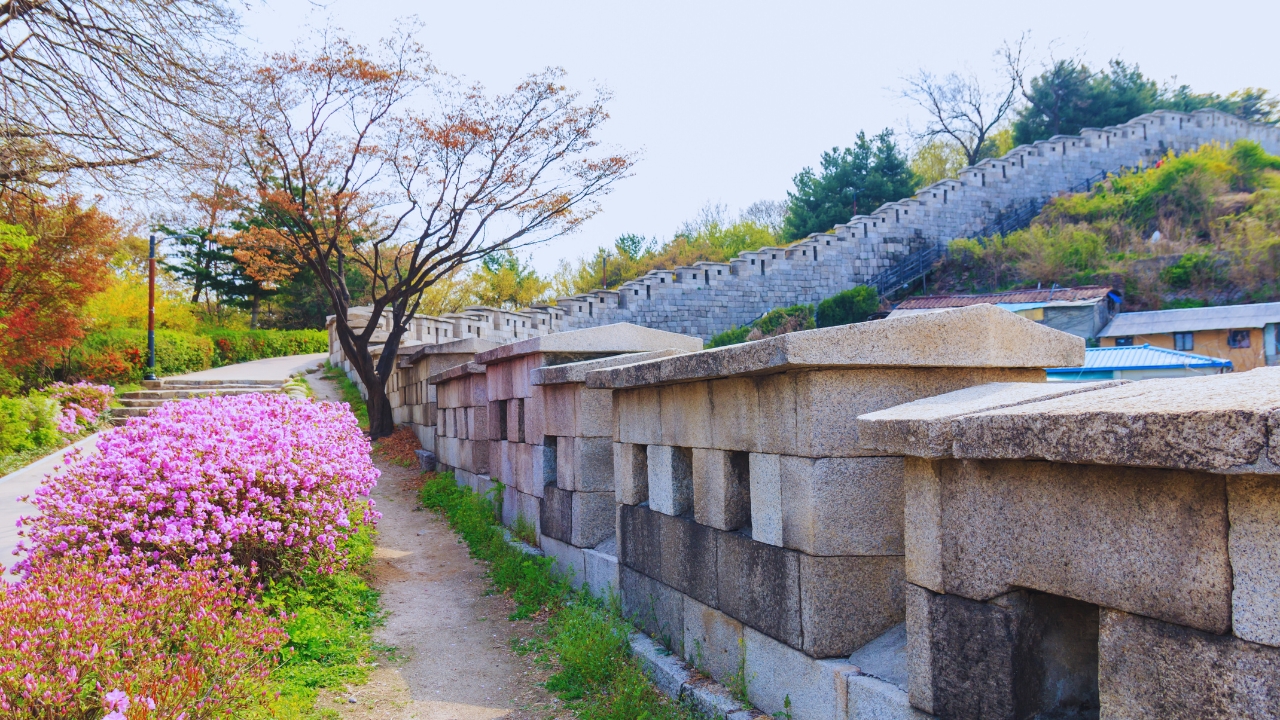 The Great Seoul City Wall is also fantastic during spring.
The Great Seoul City Wall is also fantastic during spring.- Japanese Colonial Rule: During this period, parts of the wall were demolished to modernize Seoul's cityscape.
- Notable ruins include the Seodaemun, the great west gate of the City Wall.
The Japanese Colonial Rule, which lasted from 1910 to 1945, significantly impacted the city of Seoul.
During this period, the Japanese government implemented modernization projects in the city, which involved demolishing some parts of the ancient City Wall to make way for new buildings and infrastructure.
One of the most notable ruins from this period is the Seodaemun, which was once the great west gate of the City Wall and a symbol of Seoul's rich cultural heritage.
Despite efforts to preserve it, the gate was ultimately destroyed by the Japanese authorities in 1915 as part of their efforts to modernize the city.
Today, the ruins of the Seodaemun stand as a testament to the turbulent history of Seoul and its people.
While the loss of this historic landmark is a tragedy, it serves as a reminder of the importance of preserving our cultural heritage and the need to balance modernization with preserving our past.
Preservation and Tourist Attraction
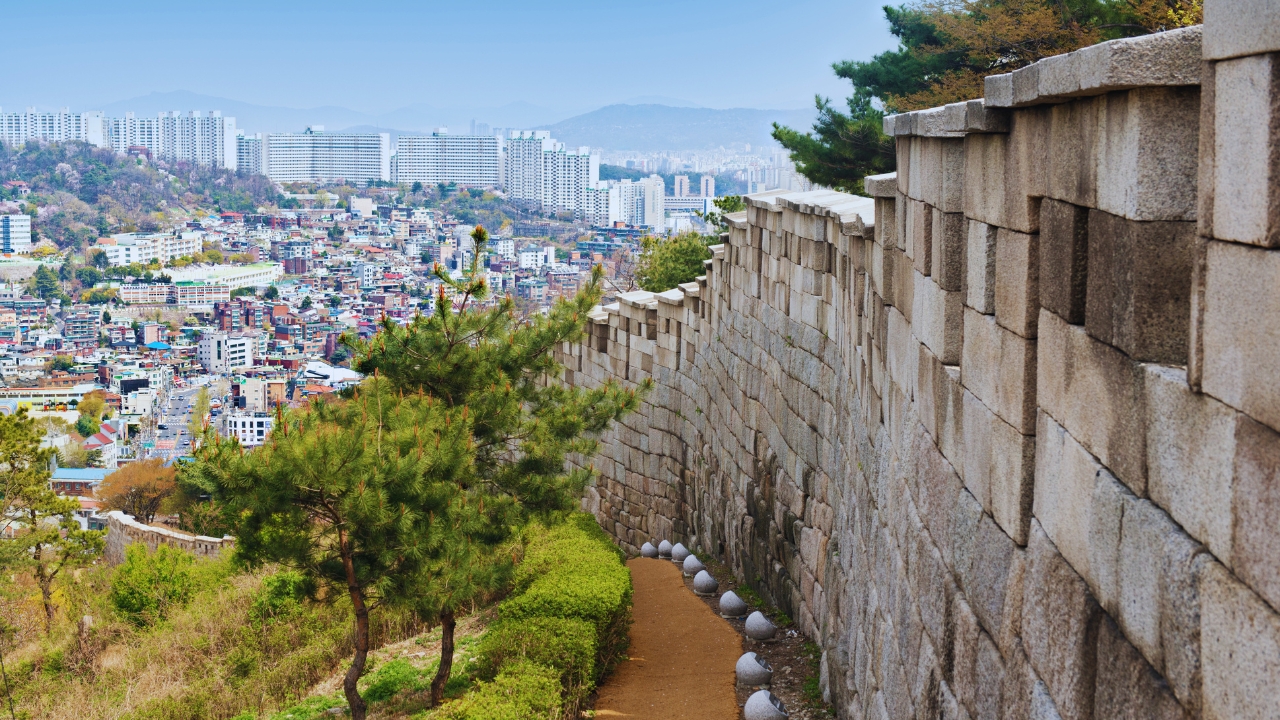 The Great Seoul City Wall
The Great Seoul City Wall- 1963: Designated as a Historic Site of South Korea.
- Present Day: Most of the City Wall remains intact in Seoul's Jongno and Jung Districts.
- Tourist Attraction: Visitors can explore the wall, which still functions as a cultural boundary, distinguishing Downtown Seoul from other city regions.
Over the centuries, the Seoul City Wall has faced numerous challenges, including invasions, fires, and neglect.
However, efforts to restore and preserve the wall have continued since the 1970s. In 1963, the wall was designated a Historic Site of South Korea, and in 1997, it was included in the UNESCO World Heritage List.
Most of the City Wall remains intact in Jongno and Jung Districts of Seoul. Visitors can explore the wall, which still functions as a cultural boundary, distinguishing Downtown Seoul from other city regions.
The wall offers a glimpse into the history of Seoul and the Joseon Dynasty, showcasing the ingenuity and skill of the builders who constructed it.
Characteristics and Visitor Experience
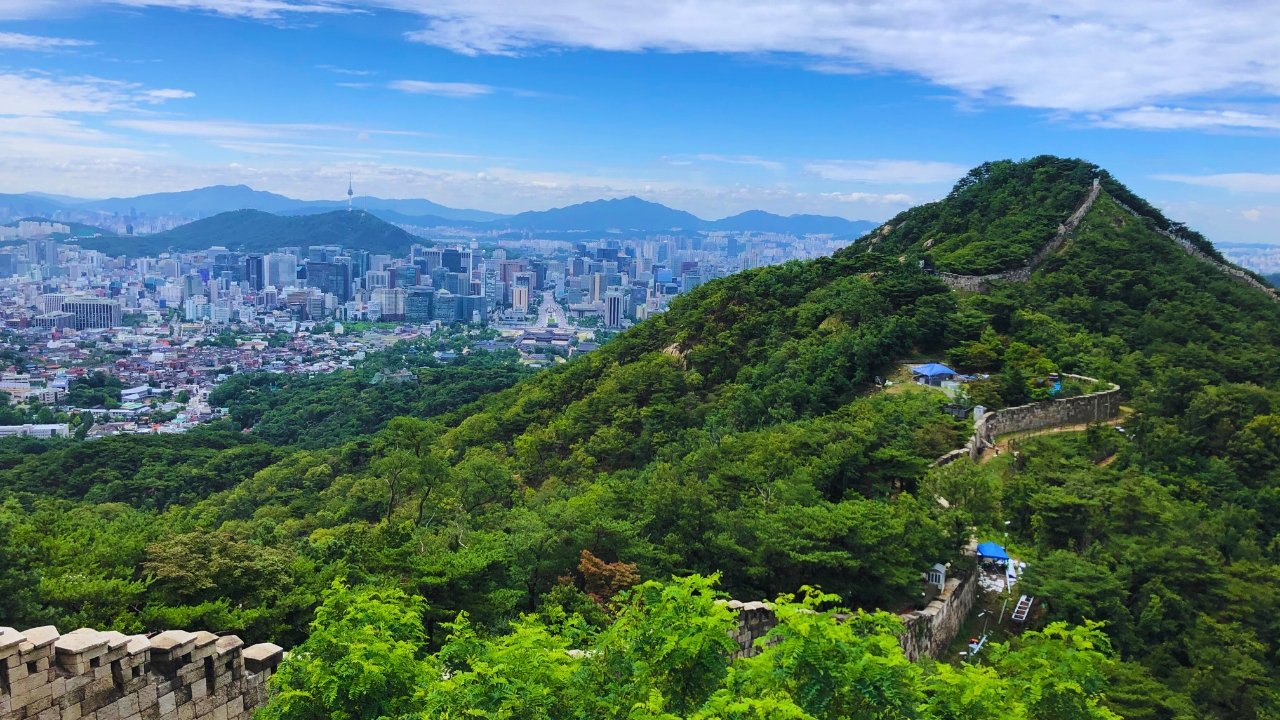 The wall is great for hiking and sightseeing any time of the year.
The wall is great for hiking and sightseeing any time of the year.The original walls, built in the late 14th century, consist of medium-sized round stones held together by mud.
- The wall is 5 to 8 meters high and spans approximately 18.6 kilometers.
- It surrounds four picturesque mountains: Baegaksan, Naksan, Namsan, and Inwangsan.
- Springtime offers a spectacular view of the wall amidst lush greenery.
The ancient walls of the late 14th century made up of medium-sized round stones held together by mud, are a sight for history enthusiasts and architecture lovers alike.
They stand tall and proud, currently 5 to 8 meters high, and span approximately 18.6 kilometers, surrounding four picturesque mountains - Baegaksan, Naksan, Namsan, and Inwangsan.
The wall is particularly mesmerizing during spring when the lush greenery surrounding it offers a breathtaking view.
Visitors can take leisurely walks along the wall and enjoy the serene beauty of their surroundings. From the top of the wall, one can enjoy a panoramic view of the cityscape, a treat for the eyes.
Not only does the wall offer a spectacular view of the city, but it also has deep historical significance.
It was built as a defense mechanism to protect the city from foreign invasions and has withstood the test of time.
Walking along the wall is like taking a trip back in time, experiencing history first-hand while enjoying the scenic beauty of the surroundings.
Why Visit?
- Historical Significance: The Seoul City Wall preserves 600 years of history and reflects the resilience of the Korean people.
- Scenic Walks: Visitors can take leisurely walks along the wall, enjoying panoramic views of the city and its natural surroundings.
- Cultural Exploration: Immerse yourself in the rich heritage of Seoul while exploring this ancient fortification.
Exploring the Seoul City Wall is a must-do activity for every guest and visitor in Seoul. The wall is an iconic city symbol and holds immense historical significance.
It is a great way to learn about the city's rich cultural heritage and the resilience of the Korean people. Visitors can take leisurely walks along the wall, enjoying breathtaking panoramic views of the city and its natural surroundings.
The wall is also famous for jogging, picnicking, and other outdoor activities. The Seoul City Wall is a perfect place to escape the hustle and bustle of the city and immerse yourself in a serene and peaceful atmosphere.
It is an excellent opportunity to learn about the city's ancient fortifications, architecture, and history.
Now, you can learn more about the Seoul City Wall. So, if you're a history enthusiast, a nature lover, or simply seeking a unique experience, the Seoul City Wall awaits your discovery!
Sources:
https://en.wikipedia.org/wiki/Seoul_City_Wall
https://seoulcitywall.seoul.go.kr/en/content/53.do
https://english.seoul.go.kr/seoul-city-wall-history-will-completed-citizens/
- Home
- Seoul Attractions Best
- Great Seoul City Wall
Get Exciting Activities
Book one of our exciting activities today to experience the thrill of a lifetime! Take advantage of this opportunity and secure your spot in advance.
Hotel Map Guide
Find your affordable, accessible, and comfortable hotel in Seoul at Agoda.Com. See the hotel map below...
Hotel Booking Guide
Find affordable and amazing hotels on Agoda.com using the search box below. Book now to enjoy great discounts and save!
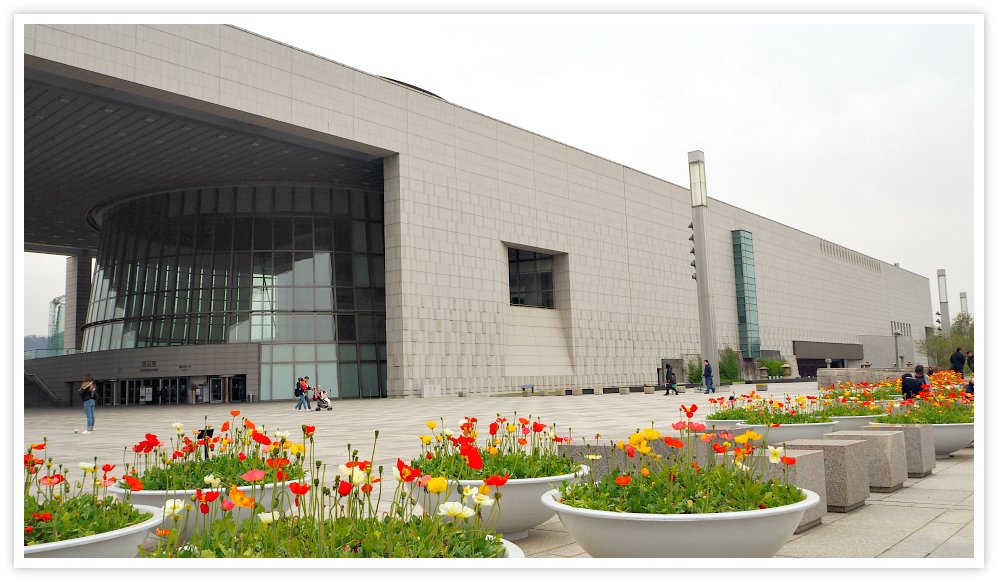

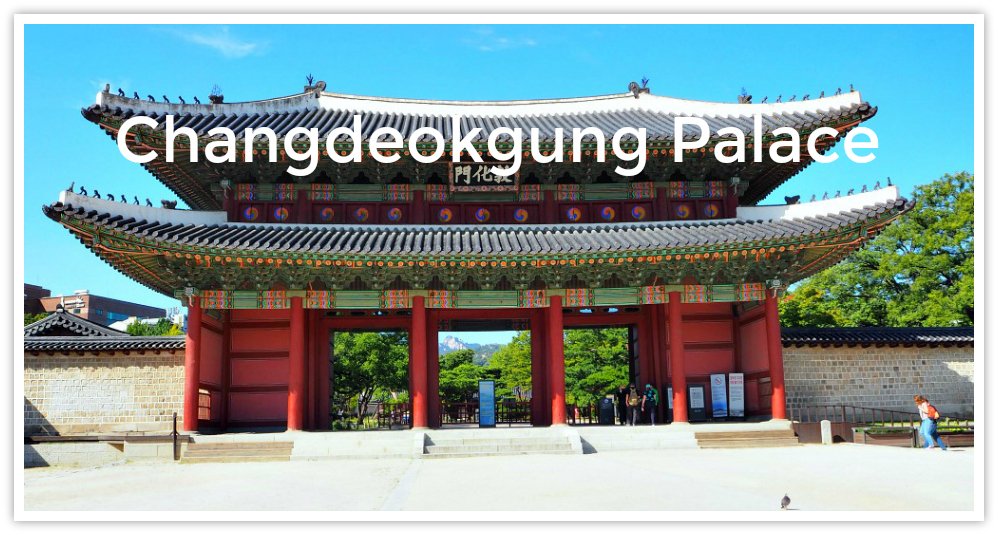




New! Comments
What do you think about this page? Leave me a comment in the box below.